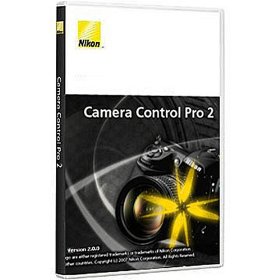

- #Nikon camera control pro 2 tutorial manual
- #Nikon camera control pro 2 tutorial full
- #Nikon camera control pro 2 tutorial iso

Use a tripod to ensure that the rest of the image isn't blurry.Ī = Aperture-priority: You choose the aperture (f-stop), while the camera selects a shutter speed that will, in combination, deliver a good exposure. On the other hand, if you want a photo to show motion, set the shutter speed down to 1/60 of a second or slower to capture the flow of a waterfall, for example. If you want to freeze movement, set the shutter speed to at least 1/200 of a second, or higher for fast-moving subjects.
#Nikon camera control pro 2 tutorial iso
(Adjust the ISO up if there's not enough light to achieve the desired shutter speed.) Unless you have very steady hands or you are using a tripod, aim for a shutter speed of 1/125 of a second or faster to avoid blurry pictures from minor camera or subject movement. S = Shutter-priority: In this mode, you choose the shutter speed, and the camera selects the aperture. (The camera will adjust the shutter speed to ensure a good exposure.) You can also change the ISO to get different settings or use Exposure Compensation (the black/white button near the camera's on/off switch) to help tweak the exposure. (The aperture will change in tandem to keep the same exposure.) Turn the command dial to the right to change the aperture. To control the shutter speed to avoid camera blur, for example, turn the command dial to the left. While the camera still decides what shutter speed/aperture combination to use, you still have plenty of options to manipulate the camera's decisions. P = program auto exposure: Although we suggest you stay away from the Auto mode (it's the green icon on the dial), a good "automatic" starting point is the Program mode.
#Nikon camera control pro 2 tutorial manual
Program, Shutter-priority, Aperture-priority and Manual (P/S/A/M) exposure modes each play a specific role in picture taking.
#Nikon camera control pro 2 tutorial full
Semiautomatic and Manual controls (P/S/A/M) allow you to access and adjust the camera's full complement of settings. While the Auto mode is good for novices and those getting used to a new camera, this option (along with Effects and Scene modes) pretty much turns the control over to the camera and limits your ability to change parameters such as white balance. This choice not only determines how exposure is calculated but also how other features behave and what other options are available to you. One of the most important decisions you make when taking pictures is selecting an exposure mode. Getting to know the Nikon D5600's controls The mode dial This prevents you from taking a picture without a memory card installed. Make sure that "Slot empty release lock" is set to Lock. While you're there, scroll to the bottom of the second page. The information displayed is the same, but it's presented in different graphical layouts and colors. Press the Menu button (to the left of the viewfinder, select Setup (the wrench icon) and head over to the top of the second page: Info display format and press the right arrow key. Check out the different Information-screen options for Auto/Scene/Effects modes and for the P/S/A/M modes.


 0 kommentar(er)
0 kommentar(er)
